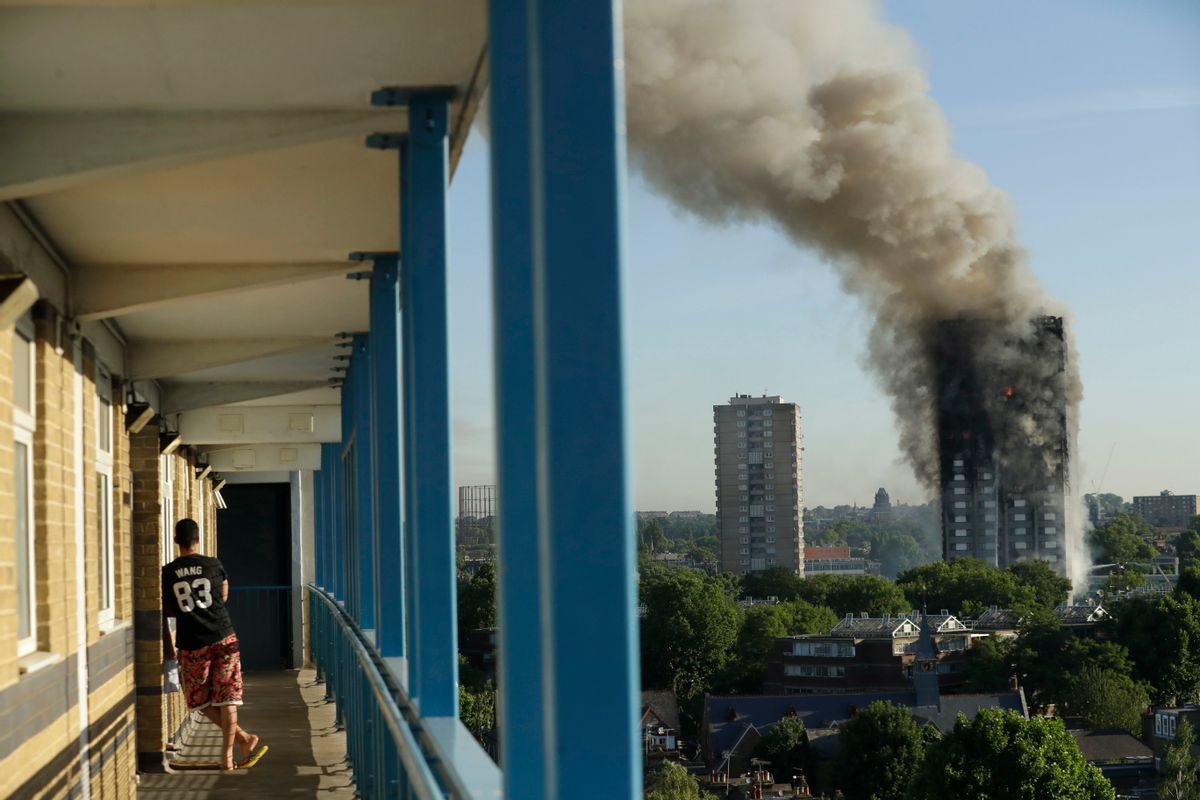Perhaps the most stomach-turning factor of the tragic fire that engulfed Grenfell Tower in London on June 14 is not the fact that it claimed the lives of at least 79 of the occupants, but rather that it needlessly claimed those lives. This is, of course, because the unfortunate reality is that the fire was completely preventable, but those outcries were disregarded.
"Residents of Grenfell Tower had complained for years that the 24-story public housing block invited catastrophe," The New York Times wrote in an investigation into the incident. The building was not only short on fire alarms, but also sprinklers and fire escapes. The building had one staircase.
In what was Britain's deadliest fire in over a century, the flammable materials that made up the facade which coated the outside of the Brutalist structure was blamed by the London Police for the rapid spread of the fire, according to the Times. "I have never seen such a phenomenal fire, a building engulfed top to bottom in flames," Dany Cotton, the London fire commissioner said on the day of the incident. It took over 200 firefighters, and 40 fire engines, as well as other emergency vehicles, to combat the incinerated building.
"Committing hundreds of my firefighters into a building that at points looked like it couldn’t possibly stand up due to the level of fire — I actually felt physically sick with anxiety about what was happening," she added. A failure of government oversight and politicians that supported deregulation are nonetheless key variables that led to a preventable tragedy that has forever altered the lives of hundreds, if not thousands.
The Times reported:
A formal government inquiry into the fire has just begun. But interviews with tenants, industry executives and fire safety engineers point to a gross failure of government oversight, a refusal to heed warnings from inside Britain and around the world and a drive by successive governments from both major political parties to free businesses from the burden of safety regulations.
Promising to cut “red tape,” business-friendly politicians evidently judged that cost concerns outweighed the risks of allowing flammable materials to be used in facades. Builders in Britain were allowed to wrap residential apartment towers — perhaps several hundred of them — from top to bottom in highly flammable materials, a practice forbidden in the United States and many European countries. And companies did not hesitate to supply the British market.
The new panels known as cladding, were installed last year in a style that includes two sheets of aluminum on both sides of "a combustible core of polyethylene," according to the Times. Two women who repeatedly attempted to raise awareness about the flammable dangers of cladding along the buildings exterior were threatened and bullied to remain silent. Both of those women, Mariem Elgwahry, 27, and Nadia Choucair, 33, are missing and feared dead as a result of the fire they sought to prevent.
Their protest was aided by the Radical Housing Network, according to the Mirror. One group member, Pilgrim Tucker, said of the women, "they both just wanted to do their best for their neighbors and keep everyone safe."
"Things had got so bad they knew a disaster like this was inevitable, but if there was a chance of stopping it they were up for the fight. But no one listened and now this community is devastated," Tucker said. "They [Kensington and Chelsea Tenant Management Organization] bullied them and persecuted those like Nadia and Mariem who were brave enough to speak out, branding them troublemakers."
Using fire-resistant cladding on Grenfell Tower would have cost just £5,000 more, or roughly $6,364. However, the cladding was used to make the building appear more attractive to those living in a neighborhood that was rapidly gentrifying, according to Vox. "So in essence, the building managers and builders added a flammable outer shell to Grenfell Tower to make it look more attractive to wealthier clients in a gentrifying neighborhood, without concern for the poorer residents already living there."



Shares